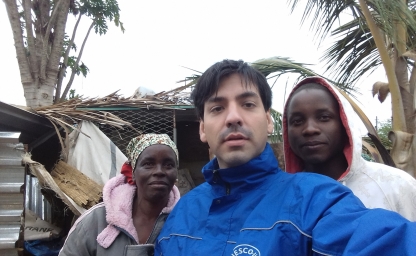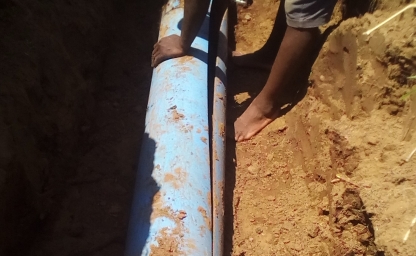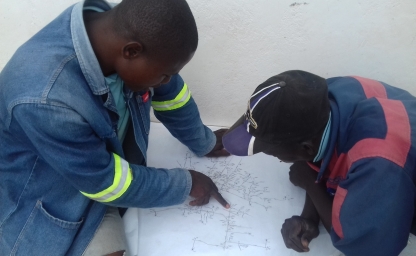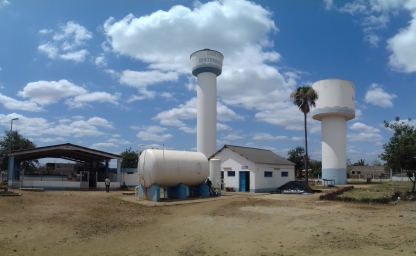Blog: Studying water infrastructure as an agent of progressive social change
Author: Luis Miguel Silva-Novoa Sánchez
As an anthropologist, coming to Africa and having the opportunity to learn from people with a culture so distant from what I am used to in my home country Peru is one of the most exciting and important experiences I ever had. I arrived here to conduct field research that aims at contributing to understand how water infrastructure co-shapes social-nature relations. According to the theoretical framework I adopted for this research, infrastructure, and objects in general, have the capability to have an impact and reconfigure socio-nature relations, rather than solely being a tool waiting to be used by human being. One way to trace this ‘material agency’ would be by paying attention to the dynamics of resistance and accommodation of water infrastructure to human will. In particular, my research is aimed at contributing to the understanding on the role of water infrastructure in shaping water provision in small towns.
The place selected for my research is Moamba, a small town located in the province of Maputo, Mozambique, where I will be working from November 2017 to January 2018. I arrived to Moamba on Monday 6 of November. I dedicated this first week to deal with some practicalities, such as finding a house to live in the next three months for a reasonable price (it is easy to be tricked when you are an outsider) and getting acquainted with everyday life in Moamba. I also spend this first week to establish contacts with people that can help me at identifying my interviewees and introducing me to them and who could show me around and explain how the water infrastructure works.
In addition, I used this time to find somebody who could assist me with translation during my first exploratory interviews. My mother tongue is Spanish and the official language in Mozambique is Portuguese, which has some resemblances, though it has proven difficult for me to understand and make myself understood in Portuguese. However, in Moamba most of the people have native languages as mother tongue (Ronga and Changana) and they do not like to speak Portuguese or perhaps do not feel comfortable with speaking it. I can state that the language barrier has been so far the main difficulty I had to deal with. However, this limitation is compensated and diminished by the kindness of people and their willingness to help without asking something in return. I am satisfied with the first findings this week has brought to my research, but the positive energy I got is from the people I met so far. Despite all the hardships they had to endure during a 20 year period of civil war, and the challenges they still face in everyday life as result of poverty and injustices, or perhaps because of this experience made them humble, they persist on being happy and are prompt to offer you a smile.
The first research findings are confirmations of some of my premises, such as the fact that the designs of the infrastructure were modified by the engineers during the construction as part of a process of adaptation to constraints and changing conditions (probably in the budget and time-horizons and other practicalities) and the physical conditions they encountered on site. Also another research assumption was confirmed by observing that the water infrastructure does not behave as expected and thus does not simply do what humans intended it to do. There are regular leaks, breaks and frails, unforeseen events and changes in the social and physical environments that oblige operators to constantly intervene on it, adding new components to it and creating new solutions. This makes water infrastructure never fully finished, it is continuously being changed and tinkered with, and never under complete control. Two particular challenges highlighted during my time in Moamba so far is first, the break of one of the tubes that brings water from the intake station to the water treatment plant and the difficulties its replacement implies for the engineers; and two, the challenge for the operators to try to identify on the water network maps the valves that could help to solve the problem of water scarcity in two of the neighbourhoods of Moamba. These neighbourhoods are located in an elevated terrain and the pressure on the system is not enough to make water go up the slope.
In order to keep tracing the material agency of the water infrastructure, the next steps consist producing very detailed descriptions of everyday practices and routines of engineers, operators, water users when they tinker with the water infrastructure. This will help to visualize in which ways water infrastructure interacts and reconfigures human agency, possibly through dynamic processes of accommodation and resistance.




